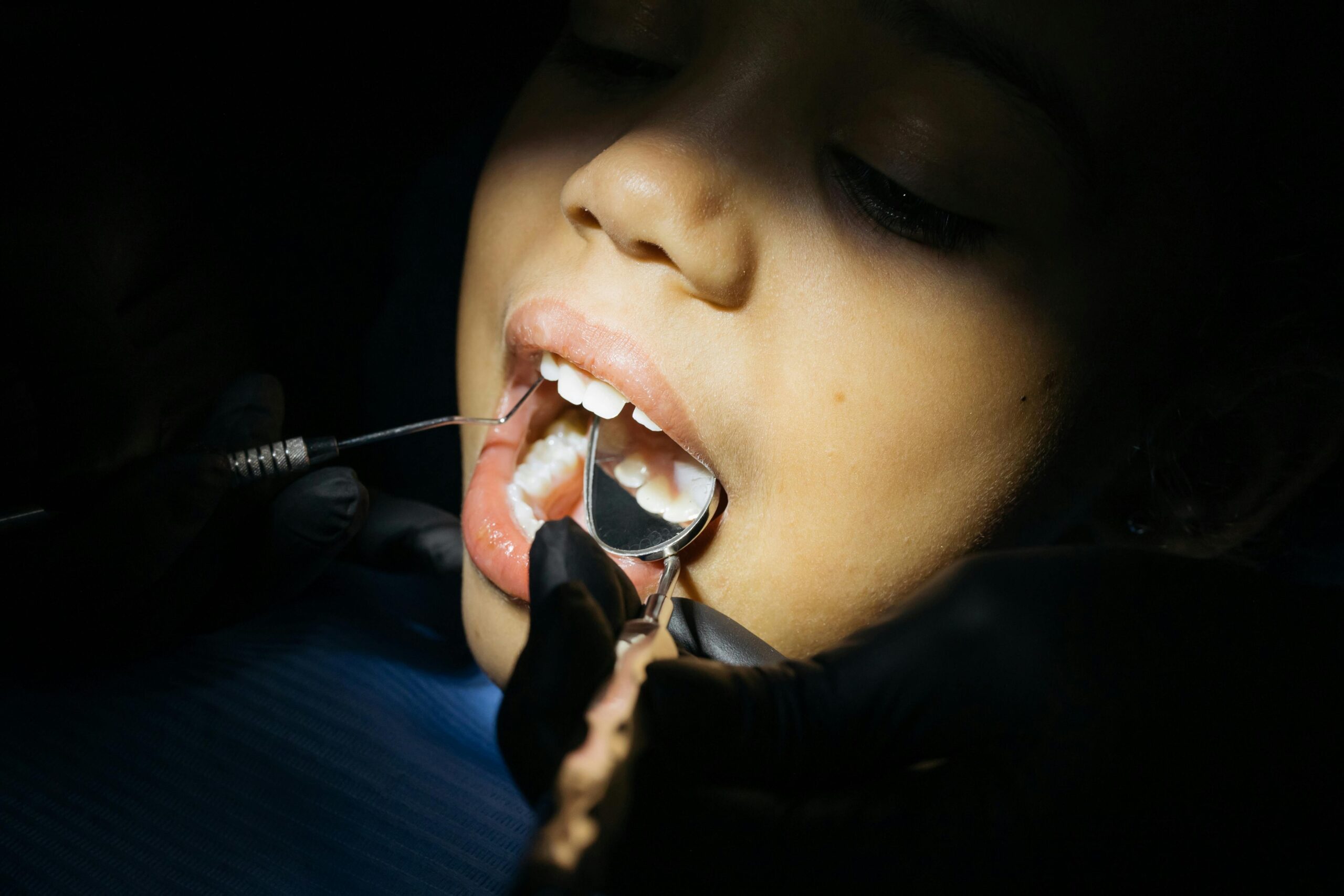You probably only think there are two phases to gum health: full health or gum disease. In reality, periodontal health is a spectrum. That’s why, at Clinton Dental Group, when you come to us after searching for “periodontics near me,” we check on where you are on that spectrum. Your gum health grade helps us create a personalized treatment plan tailored to your needs. Read on to learn about our criteria and how we can assist you.
The Gum Health Grading System
When you reach out to our team for “periodontics near me,” we use a systematic approach to evaluate your gum health. This process involves several key measurements and observations that help determine the condition of your periodontal tissues.
Pocket Depth
Gum pockets are spaces between a tooth and the gums. In healthy gums, these pockets typically measure 1-3 millimeters deep. When pockets measure 4-5 millimeters, it’s a sign that you have an early stage of gum disease, gingivitis. Pockets measuring 6 millimeters or deeper suggest advanced gum disease called periodontitis, which often requires specialized treatment.
Bleeding
Healthy gums don’t bleed when gently probed by our dental instruments. If your gums bleed during the probing process, it’s a clear sign of inflammation and potential systemic health issues, like cardiovascular disease. Our dentist will note which areas bleed, as this helps identify specific problem zones that need attention.
Gum Recession
We’ll also measure how much your gum tissue has pulled back from its original position on each tooth. Gum recession can expose your tooth roots, leading to sensitivity and an increased risk of decay.
Clinical Attachment
We combine our measurements of pocket depth and gum recession to determine the amount of support structure each tooth has lost. It’s considered the most accurate indicator of the progress of periodontal disease, helping our team plan appropriate treatment.
The Periodontal Disease Stages: Understanding Your Grade
Based on these measurements and clinical observations, dentists classify gum health into several categories. You could call it our grading system. This helps us understand the level of care you need and how we can help get your oral health back on track.
However, this grading system is never meant to judge you. In fact, you’re not alone at all if you have gum disease. The American Dental Association (ADA) reports that 42% of American adults aged 30 and up have periodontitis.
Healthy Gums (Grade: Excellent)
- Pocket depths of 1-3mm
- No bleeding
- Pink, firm gum tissue
- No gum recession or attachment loss
This means you should keep doing what you’re doing. To keep these gums healthy, make sure you stick to brushing twice a day, flossing daily, staying hydrated, and eating nutritious foods.
Gingivitis (Grade: Needs Improvement)
- Pocket depths around 3-4mm
- Some bleeding when probed
- Red, swollen, or tender gums
- No attachment loss yet—this stage is reversible
If we detect gingivitis, you might need to give your oral health routine a little more attention. Maintain daily care and consider incorporating a mouthwash; we can recommend suitable products. If it’s more severe gingivitis, we may recommend a dental deep cleaning.
Early Periodontitis (Grade: Poor)
- Pocket depths of 4-5mm
- Consistent bleeding and possible pus
- Beginning of bone and attachment loss
- Requires professional treatment
A dental deep cleaning could be the hero at this stage as well if you’re at the beginning of periodontitis. We may also need to address damage to your teeth and gums caused by gum disease.
Moderate to Severe Periodontitis (Grade: Critical)
- Pocket depths of 6mm or greater
- Significant attachment and bone loss
- Possible tooth mobility
- May require surgical intervention
In severe cases, we’ll tackle both the damage and the underlying problem. In some cases, we may need to refer you for surgical care, such as bone grafting, to help strengthen your smile again. Regardless of your situation, we’ll provide a comprehensive overhaul, guiding you through at-home tactics, lifestyle changes, and intervention from our dental team.
How Do You Know When to Look for Periodontics Near Me?
Ideally, you already have a dental home, such as Clinton Dental Group, where we can monitor your gum health at every checkup and cleaning. However, it’s okay if you haven’t been to a dentist in a while, as long as you notice warning signs and take action:
- Persistent bleeding or swollen gums
- Significant gum recession exposing tooth roots
- Loose teeth or changes in your bite
- Family history of aggressive periodontal disease
- Need for dental implant placement
If you’re unsure about the health of your gums, just ask! We’re happy to assess your gums, provide a diagnosis, and work together to find solutions to help you maintain a healthy smile.
Periodontics Near Me? Look No Further
Seeking guidance on maintaining your periodontal health? Get a gum health check-in today at Clinton Dental Group. Our dental experts can ensure your smile meets the standards. Get started today!





